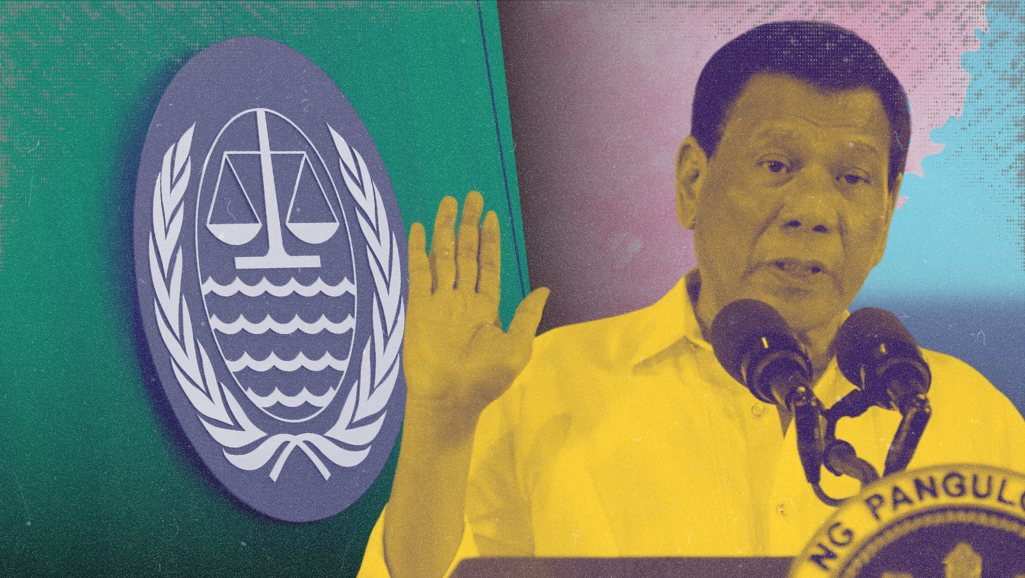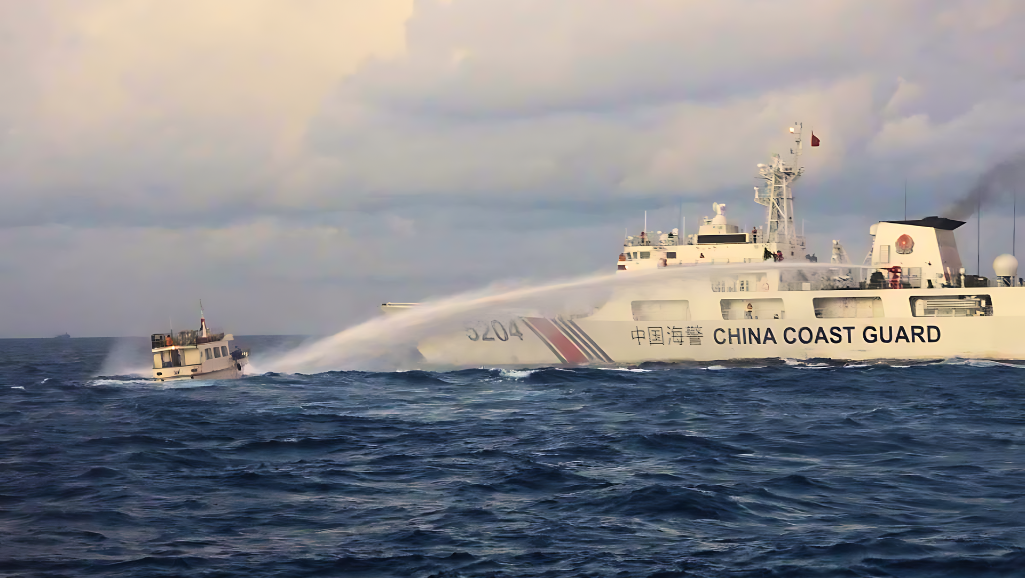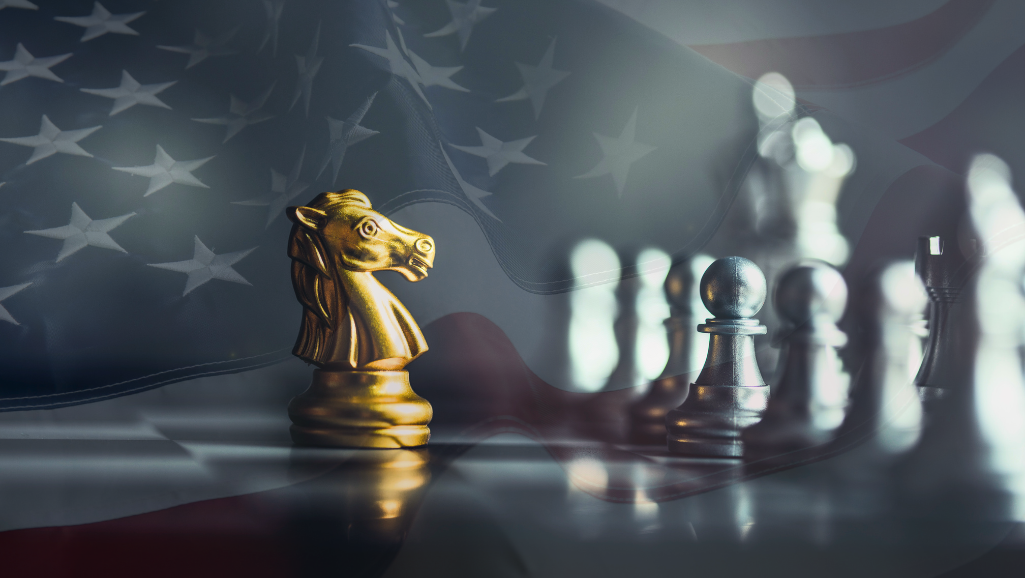
When Rodrigo Duterte was president, he discarded the landmark arbitral ruling the Philippines had won at the international tribunal in The Hague as a piece of paper destined for the waste bin.
Even before he was elected president in 2016, he said the Philippines made a mistake in bringing a case before the arbitration tribunal.
Duterte and his mouthpiece, Harry Roque, who claimed to be an expert on maritime and international law, said the ruling won by the Philippines was not enforceable.
The international tribunal under the 1982 United Nations Convention on the Law of the Sea (Unclos) has no police force to see to whether its decisions were implemented.
Under international laws, only the UN Security Council can impose punishments and implement decisions made by the council, but only if all five members with veto powers agree.
If any one of the permanent members of the Security Council — the US, United Kingdom, France, Russia, and China — vetoes a sanction, it cannot be imposed.
Thus, Duterte said it is futile to pursue an arbitration case if the decision cannot be imposed.
China is a powerful member of the Security Council. It can block whatever sanctions could be imposed by the UN and its instrumentalities.
During his six years in office, Duterte pursued an appeasement policy toward China, abandoning the 2016 arbitral ruling.
Lawyers and legal experts agreed that if the local court issued a ruling, the decision could be enforced because a sheriff could carry out the ruling to the letter.
The sheriff can also ask help from the local police to implement the decision, like removing informal settlers on private property or taking back a motor vehicle.
But how can the Philippines enforce the arbitral court ruling?
If the Philippines were a powerful state, like the United States or China, it could probably enforce the ruling because each state, under international law, could unilaterally carry out the arbitral ruling on its own in the absence of a global policeman.
However, the Philippines as a middle power has no strong capability to carry out the arbitration ruling.
Under Duterte, the Philippines abandoned its right to enforce the 2016 ruling.
He even stopped the Philippine Navy and the Philippine Coast Guard from patrolling the country’s maritime zones outside the 12-nautical-mile territorial waters.
He did not want the navy and coast guard to patrol the waters around Bajo de Masinloc.
If it was true he had entered into a “secret” deal with Chinese leader Xi Jinping, he also did not want repairs on BRP Sierra Madre and allow it to collapse. It could allow China to seize control of Ayungin Shoal.
Everything changed when Ferdinand Marcos Jr. succeeded Duterte in Malacañang in July 2022.
He stood his ground against China and convinced the US and other Western allies to support the Philippines’s cause against China.
His “transparency” strategy has rallied the US, Australia, Japan, the European powers, India, and South Korea behind its position on the West Philippine Sea.
When the Philippines decided to name its maritime zones as the “West Philippine Sea,” it was a clever move to defend its sovereign rights and distinguish its maritime zones from the larger South China Sea.
That was the start of protecting the country’s maritime zones. Now, enforcing the arbitral ruling it had won in The Hague in 2016 was another matter.
By showing the flag in the maritime zones, within 200 nautical miles and into the Spratlys, the Philippines is slowly enforcing the arbitral ruling.
It challenged China’s illegal occupation of the country’s exclusive economic zone, which the arbitral tribunal has declared as baseless.
It nullified China’s historical rights as illegal and void.
When China signed and ratified Unclos in 1996, it abandoned all its rights beyond the 200-nautical-mile exclusive economic zone.
Before Unclos took effect in 1994, there was a codified international law that governed how states would get economic entitlements and sovereignty in the seas.
After World War II, states also had the right to sail, fly, and do whatever they wanted in the high seas.
The need for Unclos came after Harry Truman declared US maritime interests beyond its territorial waters.
Unclos sets the 12-nautical-mile limit for territorial waters where coastal states can have sovereignty and exclusive control and jurisdiction.
Beyond the territorial waters, but within 24 nautical miles, the Unclos recognizes the contiguous zone where coastal states exercise control over waters.
Up to 200 nautical miles, coastal states have exclusive economic zones, which entitles coastal states to economic rights but without ownership or sovereignty.
It is also similar to the 350-nautical-mile expanded continental shelf where all minerals under water are given to a coastal state.
Thus, Ayungin Shoal and Bajo de Masinloc are within the Philippines’ 200-nautical-mile exclusive economic zone.
It does not have sovereignty but it certainly has economic rights or entitlements.
How will the Philippines enforce the 2016 arbitral ruling?
Legal experts suggested that by regularly sending patrols, which Duterte did not do, within the country’s 200-nautical-mile exclusive economic zone, it was already imposing the arbitral decision.
It challenges Chinese presence and activities within the exclusive economic zone.
By allowing and escorting local fishermen around Bajo de Masinloc, and even supplying fuel and food, the Philippines technically has been enforcing the arbitral ruling.
Showing up in the Philippines’ EEZ, installing light houses, buoys and other navigational aids in the West Philippine Sea is one way to enforce the ruling, which was long overdue.
The Philippines is not provoking China. It is not preparing to go to war against China and does not want the United States to fight as a proxy.
China has an option to accept the ruling and defuse tension in the South China Sea.
The Philippines only simply wanted to implement the arbitral ruling.

Enforcing the arbitral ruling
When Rodrigo Duterte was president, he discarded the landmark arbitral ruling the Philippines had won at the international tribunal in The Hague as a piece of paper destined for the waste bin.

Survey: More Filipinos want to align with US than China in sea dispute
More Filipinos would take the American position than side with China over the West Philippine Sea dispute, a recent survey has found.

Divisive American Indo-Pacific strategy
In January 2021, Washington crafted a strategy to promote an open and free Indo-Pacific region to deter its main competitor, Beijing, from dominating global political and economic influence.


0 Comments